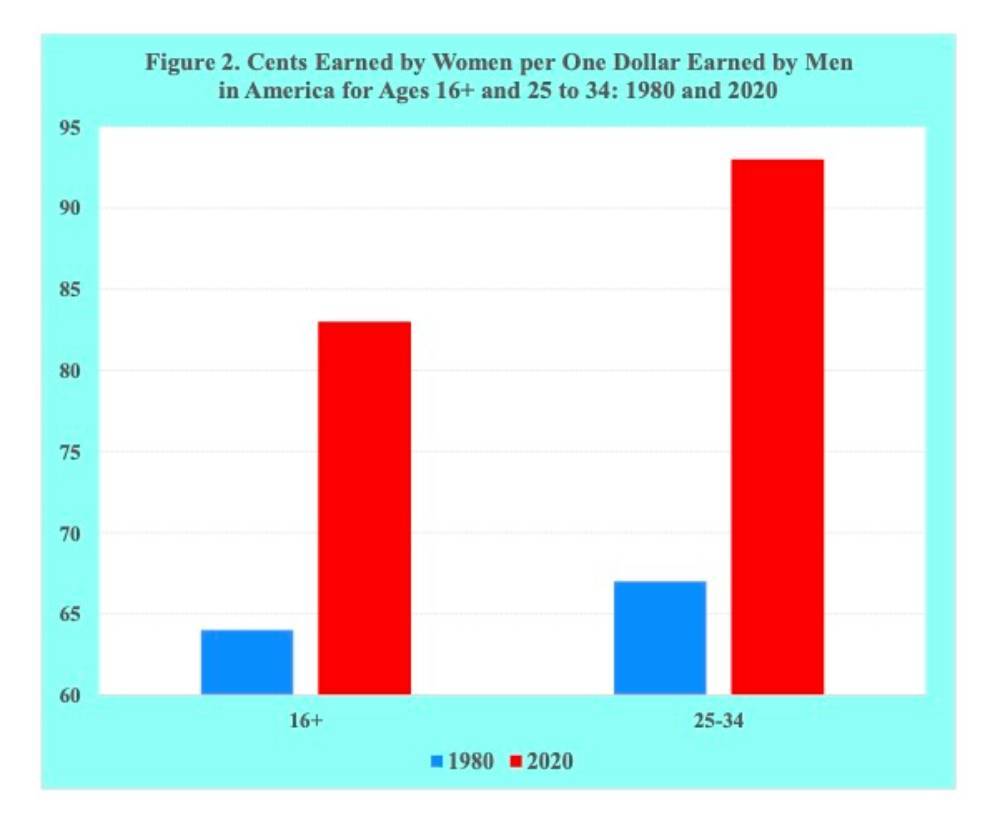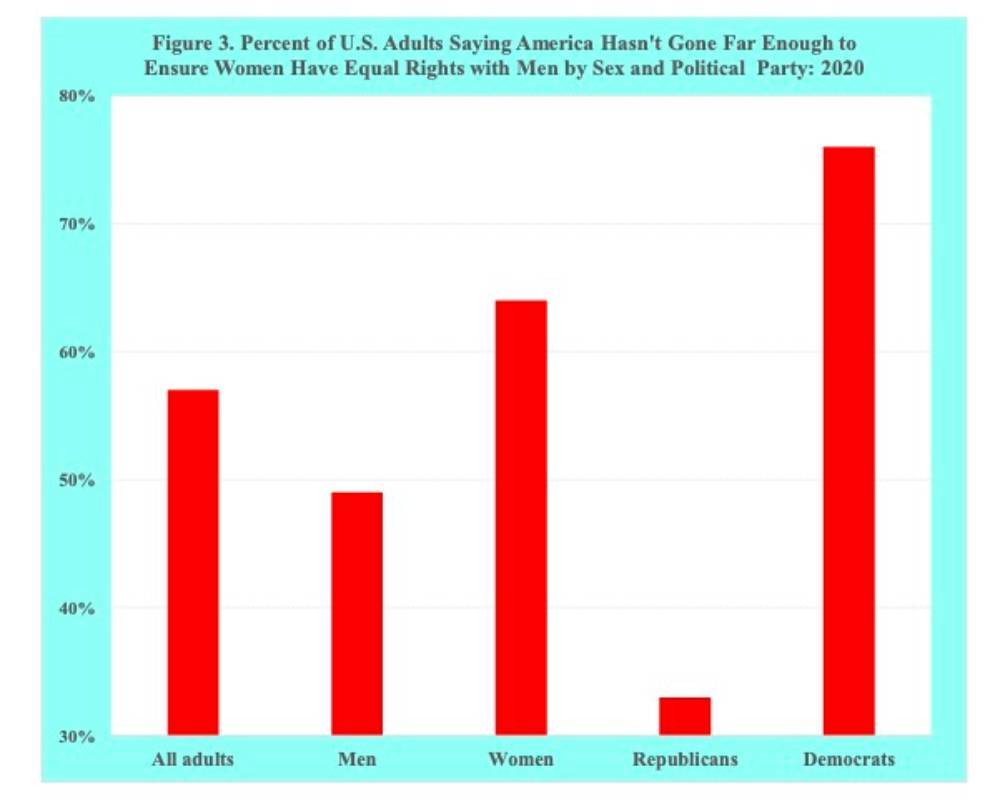While the equality of women and men in America has yet to be achieved, the struggle for women’s equality continues to impact, propel and inspire the nation.
Over the past century, Americans protested, marched and demonstrated for women’s equality. Those actions achieved notable progress despite opposition from traditionalists and social conservatives.
In 1920 the right for American women to vote became the law of land with the 19th Amendment. All states made wife beating illegal by 1920 and in 1994 the U.S. Congress passed the Violence Against Women Act, which recognized domestic violence as a national crime. Sex discrimination was prohibited in any school or education program receiving federal funding assistance by Title IX of the Education Amendments of 1972.
In addition to such achievements, women have increasingly drifted away from their relegated traditional roles such as submissive wives, stay-at-home moms raising several children, low-paid hourly workers, unpaid homemakers, and principal caregivers for young and elderly family members.
The struggle for equal rights for women begins at the youngest ages and continues throughout adulthood. At the earliest ages, children have examples of prominent, successful and accomplished women in government, business, professions, arts, entertainment and sports.
When entering schools and colleges, girls are able to actively participate in activities similar to boys both inside and outside the classroom. Girls are excelling academically, now representing 70 percent of America’s high school valedictorians.
Also, a million more women than men applied to college in the 2020-21 academic year. Women account for 60 percent of U.S. college students and earn 59 percent of master’s degrees and 53 percent of Ph.Ds. Over the past 13 years, women have been earning the majority of doctorates in America.
Regarding marriage, growing numbers of women are choosing to delay or avoid it. The educational differences between women and men are believed to be a contributing factor to some women not marrying. Educated women are less likely to marry or become partnered with less educated men; they tend to prefer men with relatively high incomes and education.
In 2021 the median age of women at their first wedding was nearly 29 years, nine years more than in the 1960s. Also, between ages 25 to 54, the proportion of women who were unmarried or unpartnered was 36 percent in 2019 compared to 29 percent in 1990.
In 2021 the average age for pregnant women at first birth was 27.3 years old, an increase from 27.1 in 2020 and a new record high. However, the large majority of women in their twenties remain childless.
Among women aged 20 to 24 and 25 to 29 the proportions of childless are 79 and 54 percent, respectively. By age 45, nearly 17 percent of U.S. women were childless in 2020, which is substantially higher than the 10 percent childless in the 1970s.
In addition to nearly one in six American women remaining childless, women are choosing to have fewer children than in the past. America’s fertility rate has declined to a half child less than the replacement level of two births per woman and is not expected to return to that level anytime soon.
In 2021 the fertility rate was 1.66, which is less than half the peak rate of 3.7 births per woman in the 1950s. The rising costs of raising children, workplace discrimination against mothers, the lack of paid parental leave and long work hours, contribute to decisions to have fewer children than in the past.
Moreover, while a large majority of American voters, 78 percent of Republican voters and 93 percent of Democratic voters, support subsidized child care and a monthly child allowance for parents, such family-friendly policies have not been enacted by Congress. Consequently, returning to replacement-level fertility any time soon is not envisaged by official U.S. population projections.
American women, especially the majority who are employed, are also increasingly aware of the gender gap in household responsibilities or the “double burden” of paid and unpaid work. In 2020 a majority of U.S. women surveyed, 59 percent, reported that they do more household chores than their spouse or partner.
Other reasons accounting for delayed marriage and pregnancies with some choosing to remain childless include birth control methods, higher education, employment, careers, women’s pay, family responsibilities as well as personal goals, such as travel and recreation.
Many women are choosing cohabitation before deciding on marriage and childbearing. The changes in the dating culture with new technologies of dating apps and communication are also contributing to delayed marriage and family formation.
Women’s labor force participation has also grown steadily in the recent past. Increasing from 34 percent in the early 1950s, women’s labor force participation peaked at 60 percent by the close of the 20th century. The proportion then began to decline, reaching 56 percent by 2020 partly due to COVID-19’s impact on the labor market.
Although the gender pay gap continues across America, it has narrowed during the past five decades. In 1973 women earned a median low of 57 cents to every dollar that working men earned. By 2022 women earn 83 cents for every $1 man earns when comparing all women to men. In addition, the gender pay gap has narrowed even more among workers aged 25 to 34, increasing from 67 cents in 1980 to 93 cents in 2020 (Figure 2).
 Source: Pew Research Center (based on Current Population Survey Data).
Source: Pew Research Center (based on Current Population Survey Data).
It should be noted, however, that the gender pay gap has nearly disappeared when comparisons are made for the same or similar job level and title, education, years of experience, industry, and hours worked.
Despite the gender pay gap, single women own and occupy more homes than single men. For 2021 the Census Bureau reported that 10.76 million U.S. homes were owned and occupied by single women versus 8.12 million owned and occupied by single men.
Some of the reasons for the disparity in homeownership are women are more educated than men, they spend less for homes than men and are willing to make more financial sacrifices than men to make it happen.
Regarding political representation, women make up 28 percent of all members of the 118th. Congress, the highest proportion in U.S. history. That percentage is also markedly higher than the proportion of nearly 18 percent of the 112th Congress a decade ago and many times larger than the 2 percent of the 91st Congress five decades ago.
In addition, in 2007 the first woman, Nancy Pelosi, was elected to serve as speaker of the House of Representatives. Fourteen years later, the first woman, Kamala Harris, was sworn in as the U.S. vice president.
Regarding equal rights for women, close to 80 percent of Americans surveyed in 2020 said they support gender equality and favor adding the Equal Rights Amendment (ERA) to the Constitution, which was initially proposed in Congress in 1923. Despite its wide support, the nation has been unable to ratify the ERA and make it a part of the Constitution.
The majority of Americans, 57 percent, also believe that the country hasn’t gone far enough to ensure women have equal rights with men. Noteworthy gaps by gender and political party exist regarding viewpoints on progress in women’s equal rights. The proportions saying the country has not gone far enough to ensure equal rights were 64 and 49 percent for women and men, respectively, and 76 and 33 percent for Democrats and Republicans, respectively (Figure 3).
In sum, it is evident that equal rights for women have yet to be achieved in America. The struggle for equality, however, has achieved notable progress and will continue to have far-reaching social, economic, political and cultural consequences for America throughout the 21st century.

















